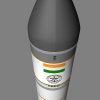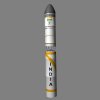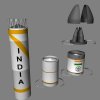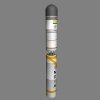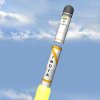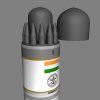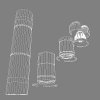- Joined
- Aug 18, 2010
- Messages
- 1,314
- Likes
- 149
Pilot ejection to be quicker and safer
The time taken by a pilot to eject from his aircraft during emergencies has been reduced to a few milliseconds, thanks to a system developed by the DRDO laboratories in Pune. The Canopy Severance System (CSS), fitted to the Tejas Light Combat Aircraft (LCA), is not only quicker but safer too, say DRDO officials.
According to them, other aircraft have a canopy jettison system which is mechanical and takes longer to be operational. In this, the entire canopy of the cockpit flies off and could result in injury to the pilot. The indigenously developed CSS, however, uses explosives and allows just a portion of the canopy to be severed. This minimizes the chance of injury during flight, said a communication from DRDO laboratories. Cockpit canopy removal or destruction is a vital part of the escape process. "Ejection usually takes 14 seconds but with the new system, it would take a pilot just 20 milliseconds to eject from the aircraft," a DRDO spokesperson told TOI.
"The CSS of the Tejas aircraft is based on a high explosive. It can also be operated from outside the aircraft, especially when the pilot is unconscious due to injury or in the event of a crash-landing," he said. "The system has been developed using technologies available in India. Therefore, it is cost effective," he added.
The Armament Research & Development Establishment and High Energy Materials Research Laboratory also played a major role in developing the system. The Aeronautical Development Agency is developing the LCA in collaboration with Hindustan Aeronautical Limited."
http://timesofindia.indiatimes.com/...d-safer/articleshow/7315183.cms#ixzz1BSjaKdjh
The time taken by a pilot to eject from his aircraft during emergencies has been reduced to a few milliseconds, thanks to a system developed by the DRDO laboratories in Pune. The Canopy Severance System (CSS), fitted to the Tejas Light Combat Aircraft (LCA), is not only quicker but safer too, say DRDO officials.
According to them, other aircraft have a canopy jettison system which is mechanical and takes longer to be operational. In this, the entire canopy of the cockpit flies off and could result in injury to the pilot. The indigenously developed CSS, however, uses explosives and allows just a portion of the canopy to be severed. This minimizes the chance of injury during flight, said a communication from DRDO laboratories. Cockpit canopy removal or destruction is a vital part of the escape process. "Ejection usually takes 14 seconds but with the new system, it would take a pilot just 20 milliseconds to eject from the aircraft," a DRDO spokesperson told TOI.
"The CSS of the Tejas aircraft is based on a high explosive. It can also be operated from outside the aircraft, especially when the pilot is unconscious due to injury or in the event of a crash-landing," he said. "The system has been developed using technologies available in India. Therefore, it is cost effective," he added.
The Armament Research & Development Establishment and High Energy Materials Research Laboratory also played a major role in developing the system. The Aeronautical Development Agency is developing the LCA in collaboration with Hindustan Aeronautical Limited."
http://timesofindia.indiatimes.com/...d-safer/articleshow/7315183.cms#ixzz1BSjaKdjh



